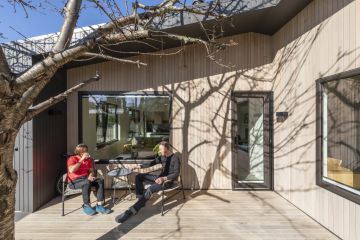Low-income households in Canberra face second-least affordable rents in nation

For low-income households, Canberra is the second-least affordable city to rent in the nation, behind Sydney.
According to the latest Rental Affordability Index, released on Thursday, some vulnerable groups in the territory are spending more than half their income on rent – for a single person on benefits, rent outweighs their income.
The report by SGS Economics and Planning shows 114 per cent of a single person on benefits’ income goes towards rent.
Pensioners, single parents, hospitality workers, and students are also bearing the brunt of Canberra’s record-high rental costs.
“Canberra is extremely unaffordable for pensioners, with couples paying 47 per cent of their income on rent [and] singles would have to spend an untenable 74 per cent of income on a newly leased property,” said SGS Economics and Planning partner Ellen Witte.
“This is well over the 30 per cent stress threshold when people experience difficulty paying for primary needs such as food, heating, medicine and transport.”
Full-time hospitality workers are also facing housing stress in Canberra.
“A hospitality worker in the ACT attempting to rent a one-bedroom unit would have to use 38 per cent of their income to pay for it,” said Ms Witte.
- Related: ACT government announces $100 million for public housing
- Related: ACT rental laws set to undergo shake-up
- Related: The cheapest areas to rent in Canberra
Students living in share houses and working part-time in Canberra are putting 34 per cent of their income towards rent – this is equal to Sydney. Canberra and Sydney are the only two capital cities that push students into housing stress.
Tight vacancy rates of 0.6 per cent – according to SQM research – are adding a further strain on student renters, particularly with an influx of new students expected in the new year.
“This year it took months for the influx of students to find houses. We heard about people sleeping in the library and the fundamental issues have not changed,” said Better Renting director Joel Dignam.
“One of the issues I hear consistently from students is that they are becoming homeless because it is so much of a struggle to find a place to live.”
It’s a different story for high-income households in Canberra, with the territory ranked the second-most affordable place to rent overall – based on the median rental household income of $100,800 per annum. This equates to 23 per cent of income spent on housing for the average renter.
“It’s great if you are on a high income and can afford to rent in Canberra, but renting needs to be affordable for everyone not just those on high incomes,” said Mr Dignam.
SGS Economics and Planning researched the report in conjunction with National Shelter, Community Sector Banking and the Brotherhood of St Laurence.
“The situation facing the nation’s renters remains poor with little or no improvement for low-to-moderate income renters in our capitals and poor affordability in our regions,” said National Shelter executive officer Adrian Pisarski.
“Compared to improvement in purchase affordability, renters are doing it tough. While we have many housing markets in Australia, none of them are positive for renters. We need a multi-party commitment to improving rental affordability over the long term.”
Domain’s State of the Market Rental Report for the September quarter found the median weekly asking rent for houses in Canberra is $550 – on par with Sydney – and $450 for units.
We recommend
We thought you might like
States
Capital Cities
Capital Cities - Rentals
Popular Areas
Allhomes
More






